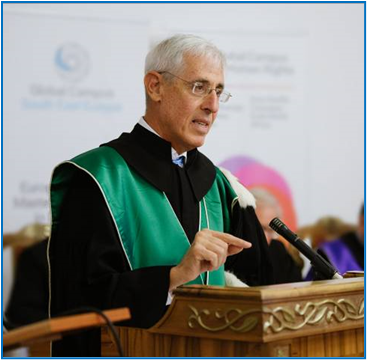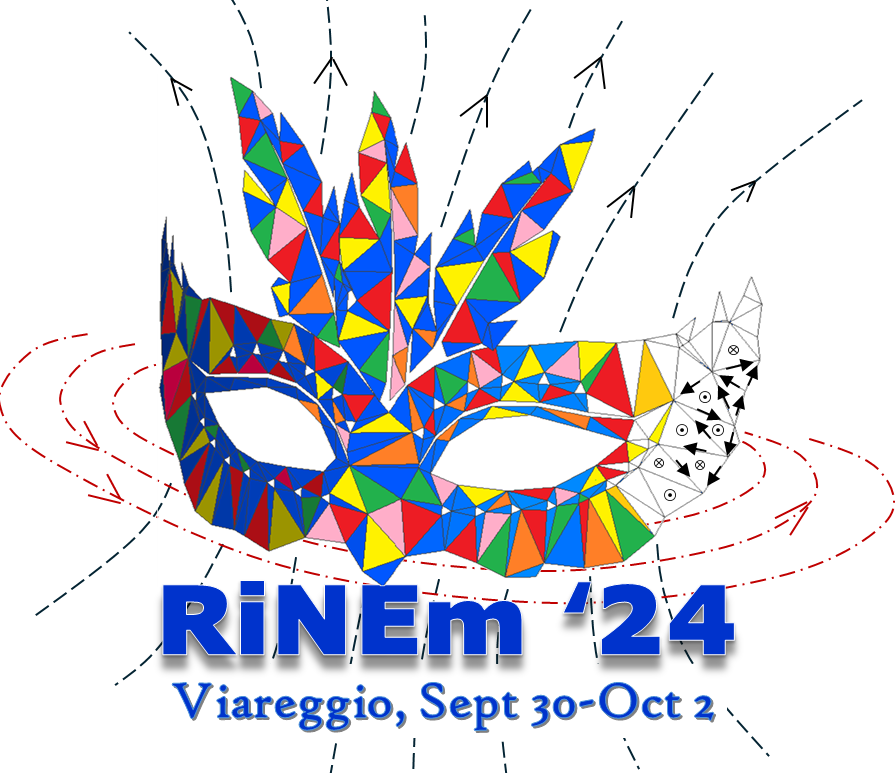The importance of the research in Advanced Electromagnetics for 5G and 6G wireless communication systems: an industry view
Roberto Flamini, Huawei Technologies Italia Research Center
Monday, September 30, 2024
Plenary, Room Cinema, 12:45-13:30

Abstract: In today’s rapidly advancing wireless communications industry, the quest for faster, more reliable, and efficient systems is paramount. Central to this progress is the field of advanced electromagnetics, which supports the fundamental principles and innovations in wireless technology. This speech will examine the crucial role that research in advanced electromagnetics plays in driving innovations within the wireless sector for Huawei Technologies. We will explore significant advancements, such as new antenna designs, metamaterials, and improved propagation models. By discussing recent breakthroughs and their practical applications, we will understand how these innovations enhance current wireless networks and lay the groundwork for future technologies like 5G and beyond. This talk will highlight the essential connection between ongoing electromagnetic research and the demands of the wireless communications industry, emphasizing the importance of continuous investment and innovation in this field to shape the future of global communications.
Roberto Flamini is the Team Leader of the Active Phased Array System group at the Huawei Technologies Italia Research Center. With over 15 years of experience in the radiofrequency industry, he has worked across the communication, automotive, and defense sectors. Currently, he focuses on microwave and millimeter wave technologies for wireless communication systems. Roberto holds a master’s degree in Telecommunication Engineering from the University of Roma La Sapienza and is a member of the IEEE AP-S Industrial Initiatives Committee (IIC).
The European Chips Act, a challenge and an opportunity for the Italian semiconductor ecosystem
Prof. Enrico Sangiorgi, Fellow IEEE, Alma Mater Studiorum Università di Bologna
Tuesday, October 1, 2024
Plenary, Room Cinema, 15:00 – 15:45

Abstract: With the entry into force of the Chips Act on 21 September 2023, the Chips for Europe Initiative and the Chips Joint Undertaking were established. The Chips JU will implement the following measures of the Chips Act: Pilot Lines, Design Platform, Competence Centers, Quantum Chip Development, for total funding of several billions Euros. In this talk I will describe the state of maturity of the various European measures and the involvement of the Italian public authority and semiconductor research system.
Enrico Sangiorgi is professor of Electronics the University of Bologna and Director Emeritus of the Sinano Institute.
He is a member of the Chips JU Governing Board and of the Aeneas Supervisory Board. He is a member of the Supervisory Board of the Foundation Chips-IT, a recently established national research center.
He has been Vice Rector at the University of Bologna and a Visiting Scientist at Stanford University and Bell Laboratories.
His research covers the physics, characterization, modeling, and fabrication of solid-state devices and integrated circuits. He has been working on device scaling and reliability.
Enrico Sangiorgi is Distinguished Lecturer and Fellow of the IEEE (2005).
The Role of Electromagnetism in Quantum Technologies
Massimo Macucci, Università di Pisa
Wednesday, October 2, 2024
Plenary, Room Cinema, 11:15-11:45

Abstract: We will outline the important role that electromagnetic aspects play in quantum technologies, in particular when qubits are implemented with superconducting circuits or even exploiting the resonant modes of 3D cavities. A basic superconducting qubit is substantially a nonlinear resonant circuit in which charge can be accumulated, in the form of Cooper pairs, on an “island” electrode. The |1> state is represented by the presence of a Cooper pair and the |0> state is represented by its absence. Switching between the two states or a quantum superposition of them can be achieved with a properly shaped microwave pulse. Readout of the qubit state can be obtained by measuring the resonant frequency of a traditional linear resonator loosely coupled to the qubit. In order to optimize qubit operation, a thorough understanding of the electromagnetic environment is needed: from the coupling between the transmission line carrying the pulse and the qubit, to the design of the readout resonator, to the analysis of the resonant modes of the conducting enclosure of the quantum circuit, to the coupling of a qubit to the resonant modes of single and multiple cavities for the encoding of the quantum information into multi-level systems (qudit). Therefore there is a huge contribution that the electromagnetic community can provide to the ongoing effort to implement a useful quantum computer, which is a largely interdisciplinary undertaking.
Massimo Macucci was born on February 24th, 1962 in Pistoia, Italy. He graduated in Electrical Engineering in 1987 at the University of Pisa, he then obtained the “Perfezionamento” (Doctorate) degree from the Scuola S.Anna-Pisa (1990), and his Master (1991) and Ph.D. (1993) degrees from the University of Illinois at Urbana-Champaign. Since 1992 he has been on the faculty of the Engineering Department of the University of Pisa, currently as Professor of Electronics. His research interests include novel nanoelectronic semiconductor devices (mainly based on low-dimensional structures), quantum computation, and noise phenomena in electronic components and circuits, as well as some aspects of electromagnetic compatibility, molecular electronics and microwave electronics. He is has been also working on electronics for transportation applications, in particular safety systems for railways, solar-powered aircrafts, and electric vehicles.
Building a Quantum Computer Using Microwave Technology
Joseph Bardin, University of Massachusetts Amherst
Wednesday October 2, 2024
Plenary, Room Cinema, 11:45 – 12:15

